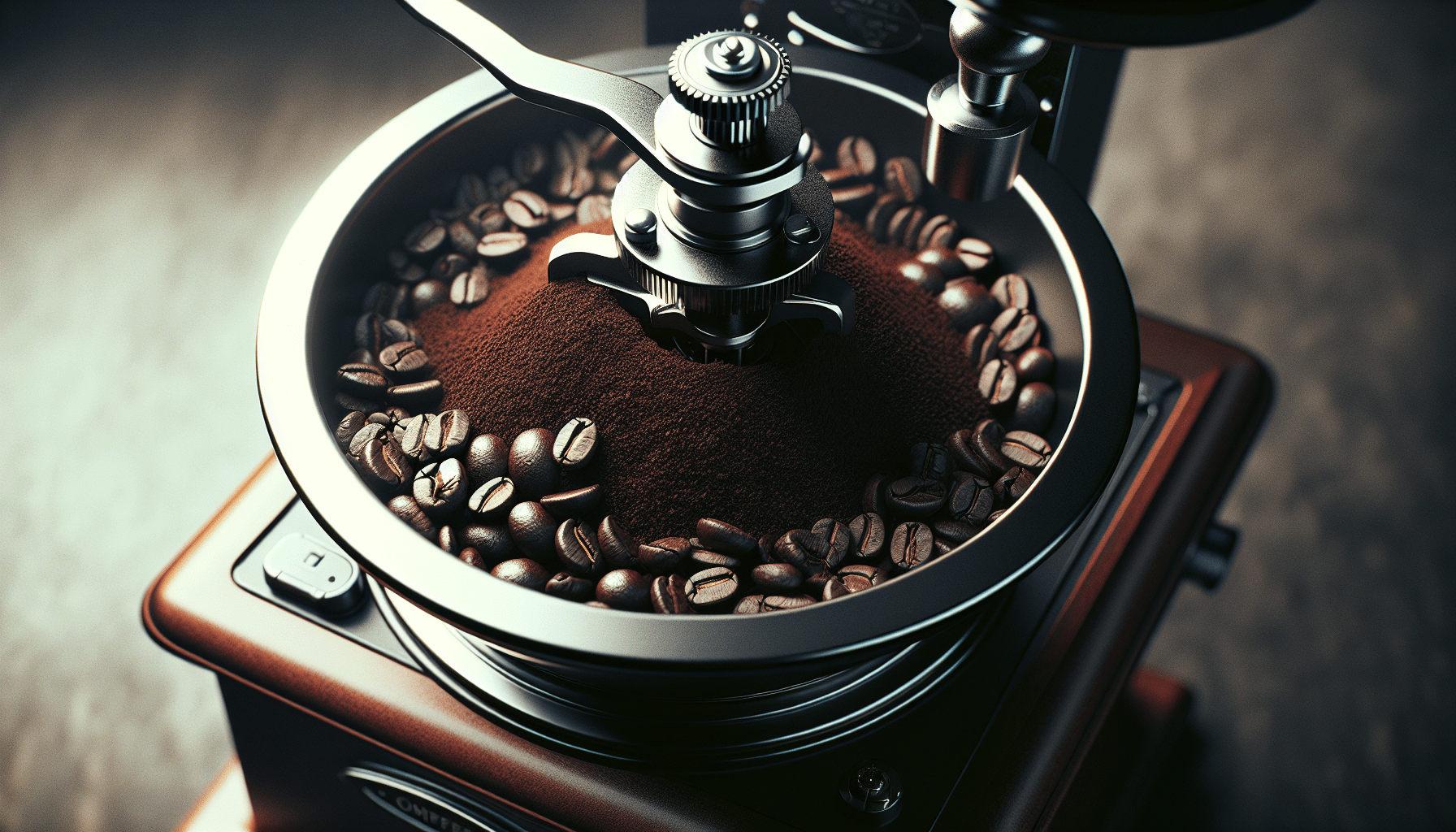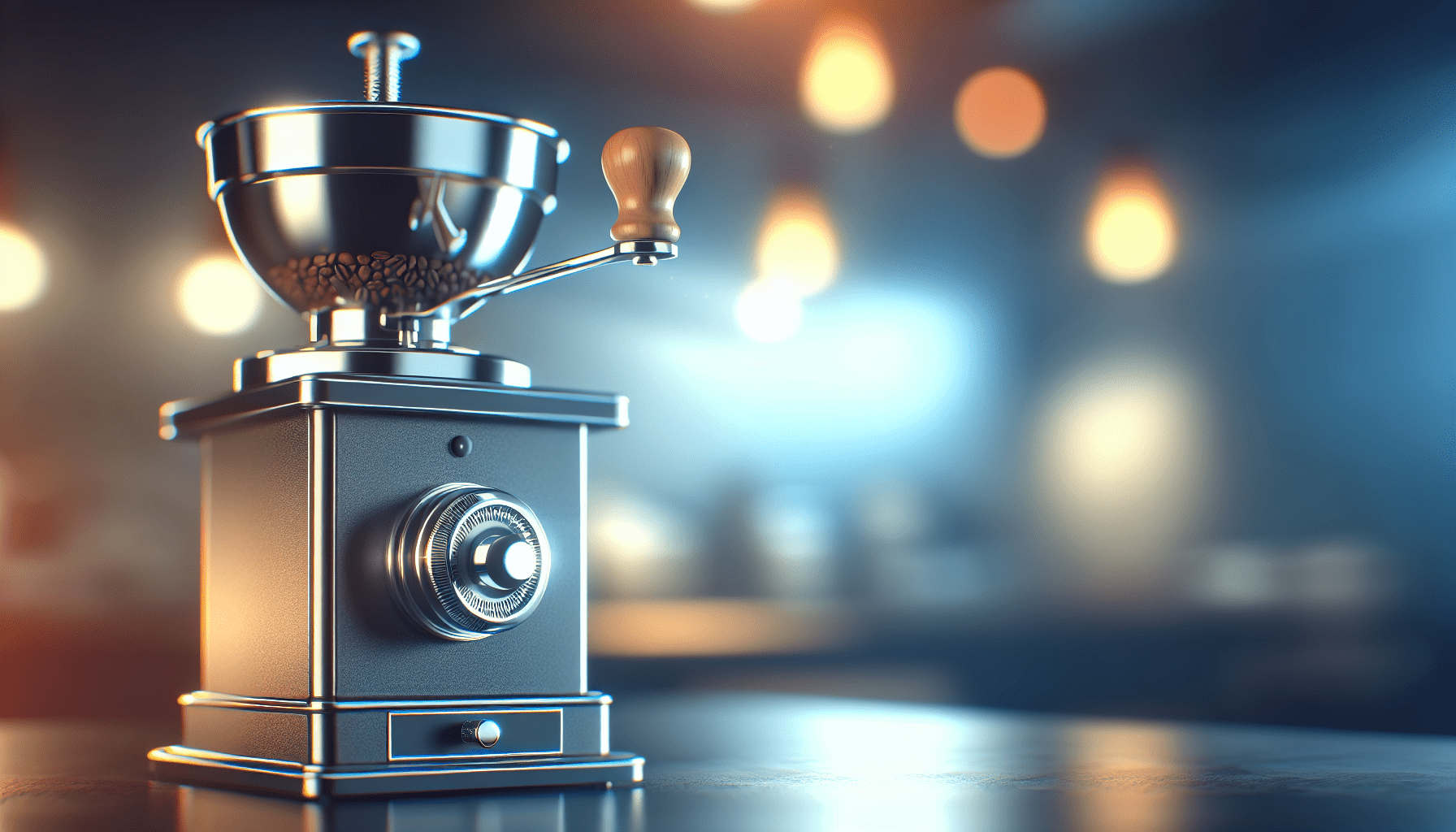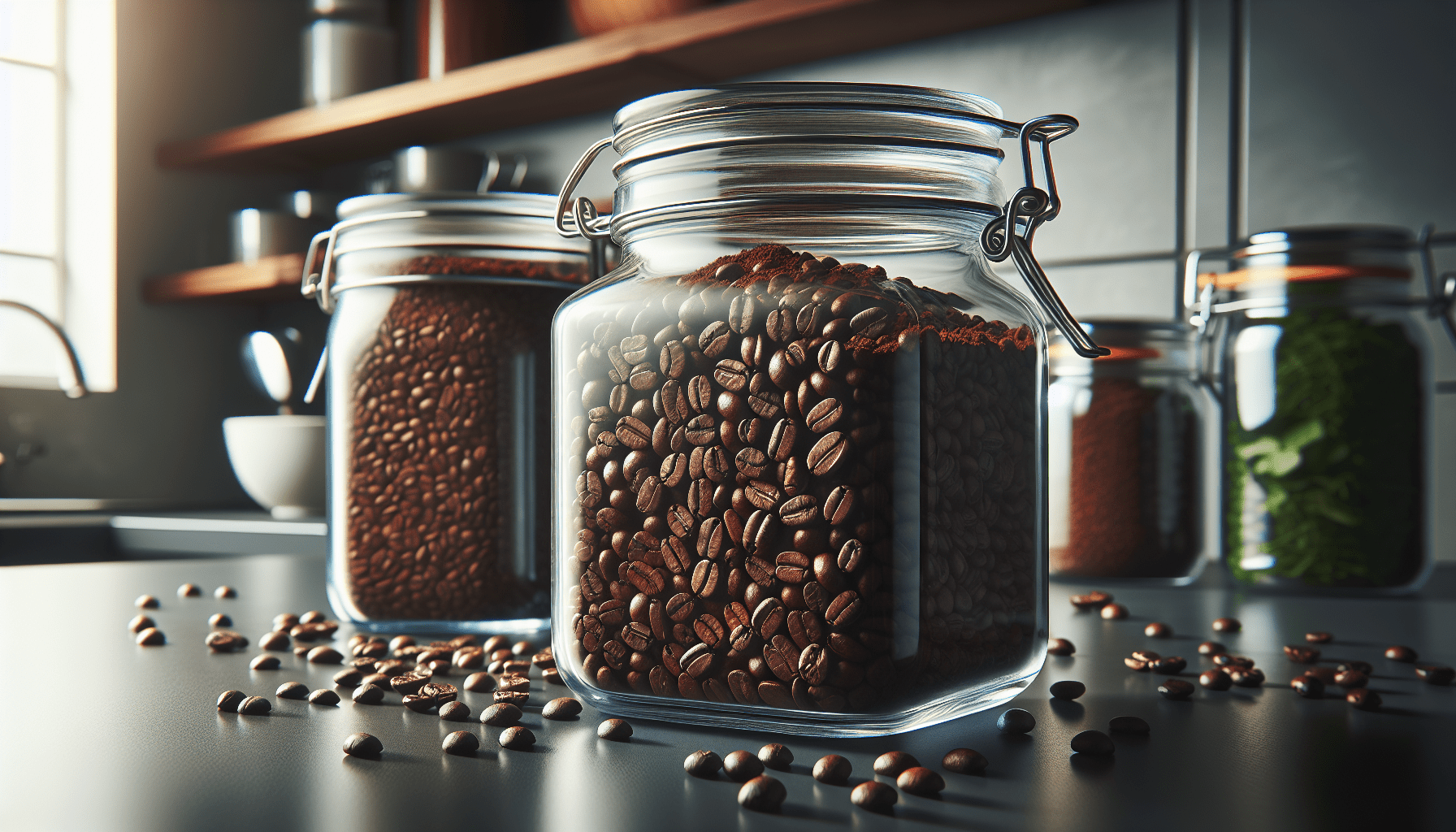So, you’ve just bought yourself a brand new coffee grinder machine and you’re excited to start using it. But you’re wondering – can you grind your coffee beans directly into a portafilter? Well, the answer is…yes, you absolutely can! Grinding your coffee beans directly into the portafilter can provide you with a convenient and efficient way to get your coffee ready for brewing. In this article, we will explore the benefits of grinding coffee beans directly into a portafilter and provide you with some tips on how to do it properly. So grab your coffee grinder machine, put on your barista hat, and let’s get grinding!
Introduction
If you’re a coffee enthusiast, you know how important it is to have the right equipment for brewing a perfect cup of espresso. One crucial component of the espresso-making process is the portafilter. In this article, we’ll explore the ins and outs of the portafilter and its role in espresso preparation. Additionally, we’ll delve into the different types of coffee grinders available, the importance of grinding consistency, and the benefits and challenges of grinding directly into a portafilter. So let’s dive in and discover the world of portafilters and coffee grinders!
Understanding the Portafilter
Components of a Portafilter
The portafilter consists of several components that work together to hold and distribute the ground coffee evenly for extraction. It typically includes a handle, a filter basket, and a spout. The handle provides a secure grip when inserting and removing the portafilter from the espresso machine, while the filter basket holds the coffee grounds. The spout serves to guide the brewed espresso into the cup.
Importance of the Portafilter in Espresso Preparation
The portafilter plays a crucial role in the espresso preparation process. It is responsible for evenly distributing the water over the coffee grounds during extraction. This ensures that all the flavor compounds are extracted, resulting in a well-balanced and delicious cup of espresso. Furthermore, the portafilter allows for the regulation of water flow, pressure, and extraction time, allowing baristas to have more control over the brewing process and achieve desired flavor profiles.
Types of Coffee Grinders
Burr Grinders
Burr grinders are widely regarded as the gold standard when it comes to grinding coffee beans for espresso. They consist of two rotating burrs, one stationary and one rotating, that crush the beans into uniform particles. This results in a consistent grind size, which is crucial for achieving optimal extraction and flavor in espresso. Burr grinders offer a variety of grind settings, allowing for precise adjustments to meet individual preferences.
Blade Grinders
Blade grinders, on the other hand, operate by slicing coffee beans using spinning blades. While blade grinders are more affordable and readily available, they tend to produce inconsistent grind sizes. The uneven particle distribution can impact the extraction process and result in an imbalanced flavor profile. Therefore, if you’re aiming for a high-quality espresso, investing in a burr grinder is highly recommended.
Grinding Consistency and Espresso Extraction
The Role of Grind Size in Espresso Extraction
Grind size plays a pivotal role in espresso extraction. It determines the surface area of the coffee particles that come into contact with water during the brewing process. The finer the grind, the larger the surface area, leading to increased extraction and stronger flavors. However, if the grind is too fine, it can cause over-extraction, resulting in a bitter taste. On the other hand, a coarser grind can lead to under-extraction, resulting in a weak and watery espresso.
Factors Affecting Grind Consistency
Several factors influence the consistency of the grind produced by a coffee grinder. One crucial aspect is the quality and design of the grinder’s burrs or blades. High-quality burrs ensure a more even grind, whereas dull or low-quality blades may produce irregular particle sizes. The grinder’s motor power also plays a role. Insufficient power can lead to uneven grinding, whereas a powerful motor can create a more consistent grind.
Direct Grinding into a Portafilter
Benefits of Grinding Directly into a Portafilter
Grinding coffee beans directly into a portafilter offers several benefits. First and foremost, it saves time and reduces the number of tools needed in the espresso-making process. Instead of grinding the coffee into a separate container and then transferring it to the portafilter, you can streamline the workflow by grinding directly into the portafilter itself. This saves you from having to handle the coffee grounds twice, minimizing the risk of losing flavor and freshness.
Challenges and Considerations
While grinding directly into a portafilter is convenient, there are a few challenges and considerations to keep in mind. One important aspect is the fit between the coffee grinder and the portafilter. Different grinders and portafilters have varying sizes and designs, so it’s crucial to ensure compatibility. Additionally, you need to consider the mess that grinding directly into a portafilter can create. Coffee dust and grinds may scatter, so it’s wise to have a clean workspace and a grinder with minimal mess-producing features.
Choosing the Right Grinder for Portafilter Grinding
Features to Look for in a Grinder for Portafilter Grinding
When selecting a grinder for portafilter grinding, there are several features you should consider. One key feature is the grind size adjustability. Look for a grinder that offers a wide range of grind settings to cater to different espresso recipes and personal preferences. Additionally, pay attention to the consistency of the grind produced by the grinder, as this greatly impacts the extraction process. Durability, ease of use, and cleaning are also essential factors to consider.
Recommended Coffee Grinders for Portafilter Grinding
There are various coffee grinders in the market suitable for grinding directly into a portafilter. Some popular options include the Baratza Sette 270, Eureka Mignon Specialita, and the Baratza Vario. These grinders have proven to consistently produce high-quality grinds for espresso. However, it’s important to research and consider your budget, specific needs, and preferences before making a decision.
Grinding Technique for Portafilter
Step-by-Step Guide for Grinding into a Portafilter
To achieve optimal results when grinding into a portafilter, follow these simple steps:
- Start by ensuring your grinder is clean and free from any residual coffee grounds.
- Adjust the grind size according to your desired espresso extraction and flavor profile.
- Set your portafilter securely in the grinder’s holder or cradle, ensuring a stable position.
- Start the grinder and allow the coffee beans to be ground directly into the portafilter.
- Once the desired amount of coffee is ground, gently tap the portafilter to distribute the grounds evenly.
- Level the coffee bed using a distribution tool or the back of a spoon.
- Tamp the coffee firmly and evenly to create a compact puck.
- Remove any excess coffee grounds from the rim of the portafilter.
- Insert the portafilter into the espresso machine and begin the brewing process.
Adjusting Grind Size and Dose for Optimal Results
Experimenting with different grind sizes and coffee doses is crucial for achieving the perfect extraction. If your espresso shots are too weak or watery, try adjusting the grind size finer or increasing the coffee dose. Conversely, if the shots are bitter and over-extracted, try a coarser grind size or reducing the coffee dose. It may take a few iterations to find the ideal combination for your taste preferences, so don’t hesitate to experiment and make adjustments.
Cleaning and Maintenance
Proper Cleaning Methods for Portafilters
Regular cleaning of your portafilter is essential to ensure the quality and consistency of your espresso. After each use, remove the spent coffee grounds from the filter basket and rinse it with hot water. It’s recommended to use a nylon brush or tool specifically designed for cleaning portafilters to remove any remaining residue. Avoid using harsh detergents, as they can leave behind unwanted flavors. Finally, allow the portafilter to dry completely before storing it to prevent mold or bacteria growth.
Maintenance Tips to Prolong Grinder Lifespan
To prolong the lifespan of your coffee grinder, proper maintenance is key. Regularly clean the burrs or blades to remove any coffee oils and particles that may build up over time. Refer to the manufacturer’s instructions for specific cleaning recommendations. Additionally, ensure that the grinder is properly calibrated and aligned to prevent excessive wear and tear. Finally, avoid overloading the grinder with too many beans at once, as this can strain the motor and affect its performance.
Alternative Methods for Preparing Espresso
Other Methods of Transferring Ground Coffee into a Portafilter
While grinding directly into a portafilter is a convenient method, there are alternative options available. One popular approach is using a separate container, commonly known as a dosing cup or a doser. By grinding the coffee beans into the dosing cup, you can easily transfer the desired amount of coffee into the portafilter without any mess. This method offers more control over the distribution and leveling of the coffee, potentially resulting in a more evenly-extracted espresso.
Importance of Pre-Infusion in Espresso Brewing
Pre-infusion is a step in the espresso brewing process that involves moistening the coffee grounds before the full extraction begins. This allows for the even saturation and swelling of the coffee, promoting a more balanced extraction. While it may not be directly related to grinding into a portafilter, pre-infusion is an essential consideration in the overall espresso brewing process. Many espresso machines offer pre-infusion capabilities, so it’s worth exploring and experimenting with this technique to enhance the quality of your espresso shots.
Conclusion
Mastering the art of grinding coffee beans directly into a portafilter is a valuable skill for any espresso lover. The portafilter, along with the grinder, plays a critical role in achieving a delicious and balanced cup of espresso. Understanding the components of a portafilter, the importance of grind consistency, and the benefits and challenges of grinding directly into a portafilter are key factors in your espresso-making journey. By choosing the right grinder, perfecting your grinding technique, and properly maintaining your equipment, you’ll be well on your way to brewing the perfect espresso shot every time. So go ahead, explore the world of portafilters and coffee grinders, and elevate your espresso experience!




